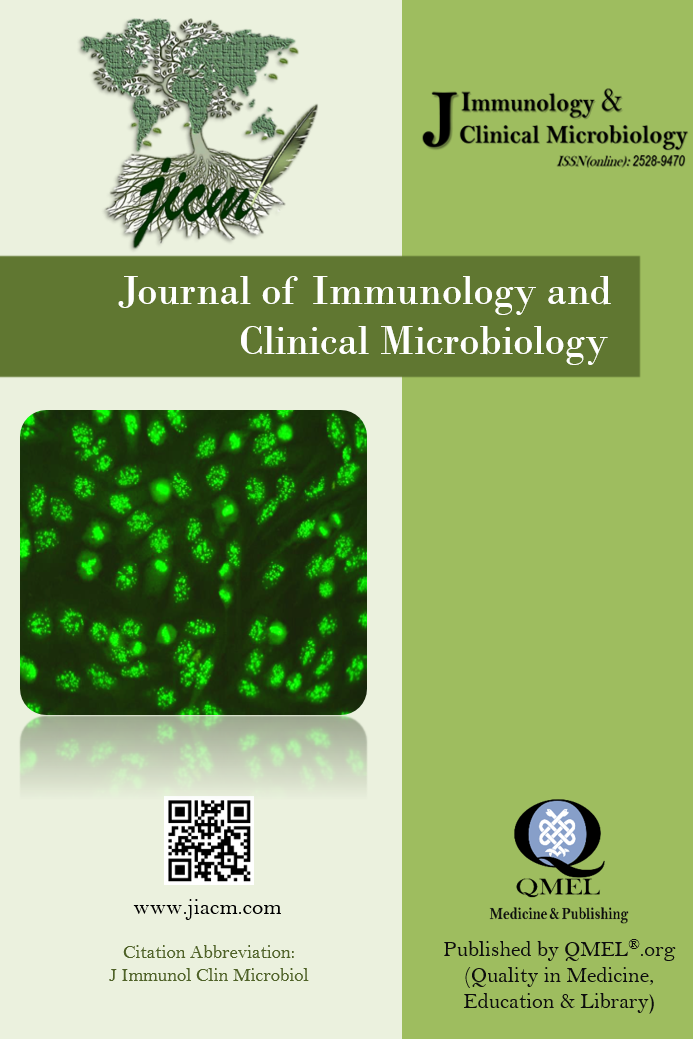
Journal of Immunology and Clinical Microbiology
Yazarlar: Ayşegül AKSOY GÖKMEN, Yeşim TOK, Selçuk KAYA, Ali KARAKUZU
Konular:Cerrahi, Genel ve Dahili Tıp
Anahtar Kelimeler:Onychomycosıs,Candida,Dermotophytes,Non-dermotophytes mold
Özet: Backround: In this study, it was aimed to evaluate the patients diagnosed with onychomycosis in terms of fungal agents in İzmir Katip Çelebi University, Atatürk Training and Research Hospital microbiology laboratory between 2014-2015. Materials and Methods: 194 patients who were diagnosed with onychomycosis were evaluated retrospectively. Direct microscopic examination was performed using 15% KOH. Samples were cultivated in SDA, PDA, mycoticotic agar at 26°C and 37°C for three weeks. Reproduction rates, surface appearance, pigmentation of colony surface and base were investigated. Candida spp identification; morphological and biochemical analysis of yeasts obtained from 24-48 hour colonies produced in SDA and / or PDA and identification system (Phoenix TM 100-yeast ID, BD). Results: Of the 195 cases, 86 (44.1%) had direct microscopy positive and 143 (73.3%) had fungal growth. When the culture was taken as the gold standard, the sensitivity of direct microscopy was found to be 58%, specificity was 94.2%, positive predictive value was 96.5% and negative predictive value was 45%. Of the 143 patients, 49% had yeast, 42.7% had dermotophytes and 8.3% had non-dermotophyte mold fungi. Conclusions: In this study, the highest onychomycosis factor was the Candidas, second most common type is dermotophytes. However, the most common factor in species level was Trichophyton tubrum and the second most common factor was Candida tropicalis. Although T. rubrum is the most common causative agent at the species level, the more common occurrence of candida in our hospital draws attention to the importance of routine mycological examinations from patients during treatment and follow-up.